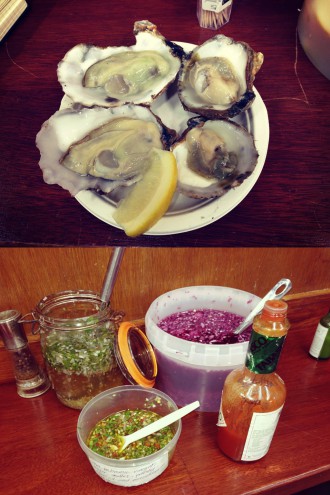Oyster terroir
Londoners enthused by our feature on Richard Haward don’t have to travel to West Mersea: they can pop down to Borough Market, where the Essex oyster master has a booth that captures the rough and ready charm of the Company Shed to perfection.
It’s run by Danny, who makes his own dressings, including one with balsamic vinegar and coriander that adds another herby, fragrant layer of complexity to the maelstrom of flavours that is a West Mersea oyster.
The booth also does take-away boxes for Valentine’s Day. You can choose rock or natives in varying sizes, but the pick is probably a dozen #2 natives for £15.
If after filling your boots here you’re still not satisfied, you can just cross over the road and compare and contrast with the equally wonderful Helford oysters served up at the Wright Brothers’ Oyster and Porter House. Therein lies another great tale, which we’ll tell later in the year.
And if you still want to know more about how oysters from different places compare, check out the superb tasting guide put together by the Shellfish Association of Great Britain, which offers notes on the nose, body, finish and texture of oysters from the various beds around the UK.
It’s rather like a wine or whisky guide, capturing the terroir of each area, from the “mild taste of cut grass with hints of walnut shell and driftwood” of the Whitstable rock to the “lingering light tin and copper finish” of the Fal native.
Environmental conditions have a significant impact on flavour, the guide explains. That’s because oysters feed by filtering water through their system – a single oyster can filter up to 10 litres of water per hour. The flavour is a function of the minerals, salinity, and the type of algae they eat in the water. Even oysters from the same estuary can vary depending on exactly where they are grown. Find out more by downloading the guide here.






